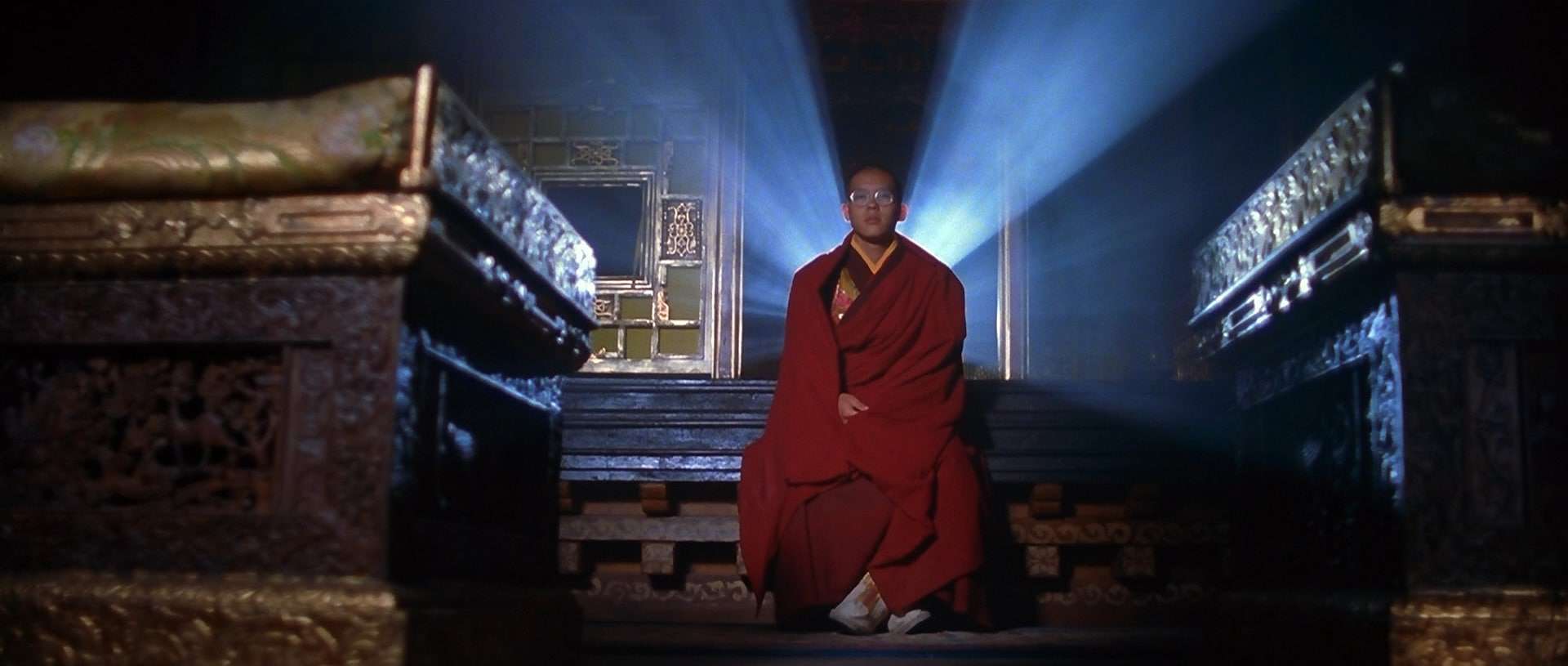Twenty years ago, Martin Scorsese’s Kundun, a biopic of the Dalai Lama, was released and then swiftly buried. We dig it up.
There’s an excellent joke in the first season of The Sopranos. Christopher Moltisanti (Michael Imperioli) and his friends are queuing outside a nightclub in New York when Martin Scorsese is rushed past the line. Tony Soprano’s protege gangster shouts to the director of Goodfellas: ‘Yo, Marty! Kundun. I liked it!’ It isn’t the first choice you’d expect to spring to Christopher’s mind, but the Scorsese’s Dalai Lama biopic needs all the love it could get.
Disney released Kundun in December 1997 in time for Oscar nominations. It received four but won none. With a budget of $30 million, the film was a prestigious piece of work. With Scorsese at the helm, it boasted sublime cinematography from an up-and-coming Roger Deakins, one of Philip Glass’ best film scores and a screenplay by E.T. scribe Melissa Mathison. Although the subject of Tibetan independence was a sensitive topic, courting instant Chinese displeasure, Hollywood had high-profile pro-Tibetan advocates, like Richard Gere, and the Dalai Lama himself was being feted as a celebrity. Plus, Brad Pitt had starred in Seven Years in Tibet only months earlier and, despite having double the budget of Kundun, made a tidy profit. The times were perhaps a-changing.
Alas no. Universal had already balked as a distributor, so Disney – in an attempt to burnish its credentials as a serious-minded studio – had decided to distribute it, but the backlash from the Chinese was so dramatic that they instantly regretted it. Disney boss Michael D. Eisner would meet with the Chinese Prime Minister, Zhu Rongji, in October 1998, and apologize for the film, calling it ‘a stupid mistake.’ He went on to say in the same meeting: ‘This film was a form of insult to our friends, but other than journalists, very few people in the world ever saw it’. The flop and subsequent paucity of home entertainment releases felt strategic as Disney brushed it under the carpet and fixed fences with an eye to reopening China’s huge markets to Disney product as well as the development and building of Disneyland Shanghai.
Given its largely forgotten initial release, Kundun deserves a reappraisal: not least because we can now see it as part of a greater whole; the centerpiece of a triptych of religious films which began with The Last Temptation of Christ (1988) and concluded with Silence (2016). All three films see charismatic religious figures clashing with a world, which is essentially antagonistic to their faith, but whereas the Christian movies are distractingly starry affairs – who can forget Harvey Keitel’s Judas or for that matter David Bowie’s Pontius Pilate? – the remoteness of Kundun gives it a timelessness. The cast is predominantly made up of non-actors with relatives of the Dalai Lama playing some of the roles – Tenzin Thuthob Tsarong, a grandnephew plays the adult Dalai Lama and Tencho Gyalpo, a niece, playing his mother.
The story of the life and tribulations of Tenzin Gyatso, the 14th Dalai Lama, the spiritual and temporal leader of Tibet is told in a chronologically-linear narrative, using an episodic structure to take the audience across the stepping stones of the Lama’s childhood through his growth and coming of age to his precipitous flight Tibet, seeking refuge from the Chinese invasion and subjugation of his country. Although criticized for its release for a reverence towards its subject – Roger Ebert claimed Scorsese was ‘bedazzled by the Dalai Lama’ – stylistically the director makes few concession to Buddhist stillness. With Deakins’ prowling camera, Glass’ pulsating score and Thelma Schoonmaker’s inventive and occasionally startling editing, Kundun proves that for Scorsese meditation is a dynamic activity.
Following E.T.‘s template, the camera takes on the point of view of the protagonist, sometimes literally as we wake up to a side-way view of feet in a doorway. Knowledge is gathered through glances and glimpses – a mouse drinking in the temple, Chairman Mao’s shiny shoes – as well as visions and dreams. Insight comes from observation as much as introspection. Among the personal possessions of the 13th Dalai Lama, the selection of which will prove the 14th’s continuity and identity, are a pair of spectacles – and later a telescope, a lamp, and an old film projector will be added. The political realities of Tibet and some of the less than reverential criticisms of the Tibetan regime are likewise spied from the temple walls – the political intrigues, the prisoners in chains and the poor people living at a basic subsistence level.
The central figure of the Lama himself is atypical as a Scorsese protagonist. Although he has moments of empathetic grief and stabbing emotion, he has none of the anguished doubt nor the flaws of Willem Dafoe’s Jesus or Andrew Garfield’s persecuted missionary. Instead, there is a passivity, a placid ease, that is at once beguiling and frustrating. Ironically, his character is perfectly in keeping with a Disney hero – an innocent who though occasionally mischievous maintains his fundamental goodness and, with the aid of dedicated servants, confronts the duplicity and corruption of the world around him.
Ultimately, Kundun takes its subject seriously and on his own terms. It is one of Martin Scorsese’s most beautiful films which, following two decades of neglect, deserves to be seen again.

